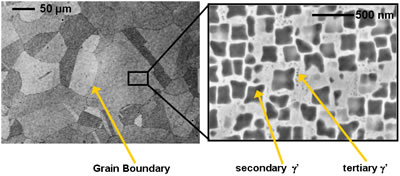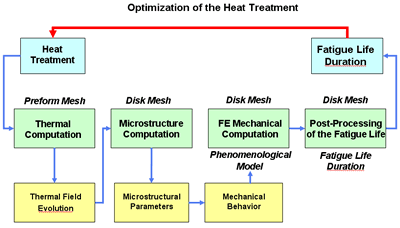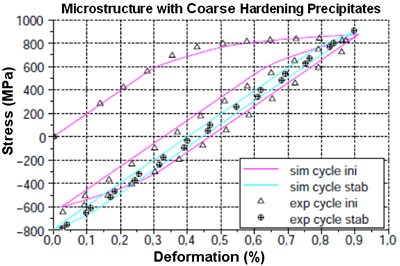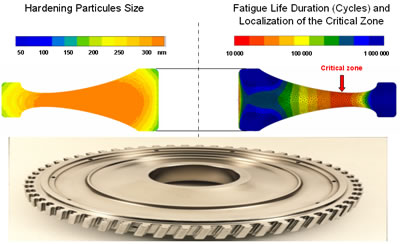Modeling of material microstructures allows the simulation of their mechanical behavior in operation, and so the optimization and greater reliability in the design of parts, for more reliable and efficient aircraft engines.
Number 51
 The optimization of the superalloy used for the disk of the Rafale aircraft’s Snecma M88 engine involves microstructure modeling (visible in the background) |
Some of the materials present in aircraft engines must be particularly resistant. This is especially the case for “critical” parts, such as turbine disks or blades, which are subjected to high mechanical stresses at high temperatures and which, in case of rupture, risk compromising the integrity of the engine, and even of the aircraft. In addition, improving the engine performance means increasing the combustion gas temperatures and consequently requires a thorough optimization of the mechanical behavior of the materials at high temperatures. |
Finely modeling the behavior and the damage of these materials in relation to their microstructures is thus crucial for the design of more efficient and more reliable materials and parts of future engines (reduction of maintenance costs and improvement of aircraft safety).
The current materials used for these parts, which are metallic, are superalloys strengthened by the formation of hardening particles and having a complex microstructure, which consists of a single “grain” (crystal formed by the alloy atoms) for blade applications and of a polycrystalline material ( aggregates of grains) for the disks.

Polycrystalline material N18 used for turbine disks, consisting of an aggregate of grains. On the right, an enlarged view of a grain, showing the presence of hardening precipitates.
It is necessary to establish the links between the chemistry, the fabrication process, the microstructure and the mechanical behavior, especially when the component is used under temperature and mechanical stress variations.

Calculation chain from heat treatment to fatigue life duration for a turbine disk
The mechanical response of these materials is intimately related to the distribution of hardening precipitates and to the size of the grains in the case of the disks. In addition, the microstructure of these materials is likely to change during the operation of the turboengine. Predicting the fatigue life duration thus requires the modeling of the microstructure and the development of behavior and damage models, including information on microstructures. “It is important to understand how the distribution, the shape and the size of the precipitates and of the grains affect the mechanical resistance and condition the fatigue life duration of the part in service”, specifies Franck Gallerneau, head of the Behavior and Damage Mechanics Unit of Onera’s Metallic Materials and Structures Department (DMSM). “These models will help us to find the microstructure best suited to increasing the working life of parts”.

Simulation of the superalloy mechanical response to a repeated cyclic deformation
This research brings together Onera scientists who are specialists in metallic materials: metallurgists, who focus on studying the microstructure of metal alloys and solid mechanics specialists, who study the behavior of these materials when they are deformed. “Nowadays, we develop mechanical models that include some microstructural parameters that allow for better prediction of the response of the material to deformation, but there is still a lot to be done to establish and model the relationships between the microstructure and the resistance to fatigue”, says the researcher. The models are validated by observing materials under the microscope, in order to check that the microstructure is the expected one, and by performing mechanical tests on various microstructures. Lastly, the “technological” tests on parts are performed under use conditions that are close to those encountered in operation, in particular the heating and cooling that the parts are subjected to during a flight, in order to validate on a structure the chain of calculation of the fatigue life duration.

Calculations of the microstructure gradient
and the fatigue life duration of a turbine disk
DMSM metallurgists and mechanics specialists are currently working on the optimization of a latest generation superalloy, which will replace the one that is currently being used for the turbine disk of the Snecma M88 engine on Dassault Aviation’s Rafale aircraft. “We are developing a complete calculation chain for this alloy. We will thus be able to optimize the microstructure of each area of the part, by experimenting with the preform of the disk and the thermal treatments” emphasizes Franck Gallerneau.
Interview and article by Cécile Michaut.




